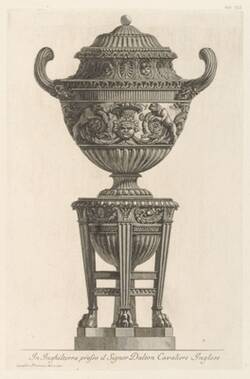Further Media
For many centuries, salt was one of the most important trading goods in Europe. In the Roman Empire it was even weighed in gold, enjoying great popularity not only for seasoning dishes. Because its chemical structure removes moisture, it was indispensable for preserving perishable foods such as fish and meat. During the pre-industrial age, the extraction and processing of this raw material consequently led to great wealth. Precious vessels such as this one were used to serve salt at the table, unlike the shakers and mills that are common today. As far as their design is concerned, material and decorative aspects frequently trumped functional ones. This is also the case with the present silver bowl.
With its lion feet and heads, fluted, cross-braced legs and its decorated round bowl, it harks back on the formal language of Antiquity. An unknown silversmith, who was probably based in southern Germany, may have had specific models: the three-legged stands that usually carried fire bowls in the noble households of Greek and Roman Antiquity are particularly close to this salt bowl.
The source may not necessarily have been an archaeological find. Graphic reproductions, which enjoyed great popularity among collectors from the fifteenth century onwards, would have given an impression of such objects as well. Instead of a large bronze piece of furniture used for burning offerings, we are dealing here with a miniature, silver object for storing table salt. In both cases, the key to the design lies in the strict geometry that mediates between the curvature of the bowl and the linearity of the legs and struts.
Text: Alexander Röstel
